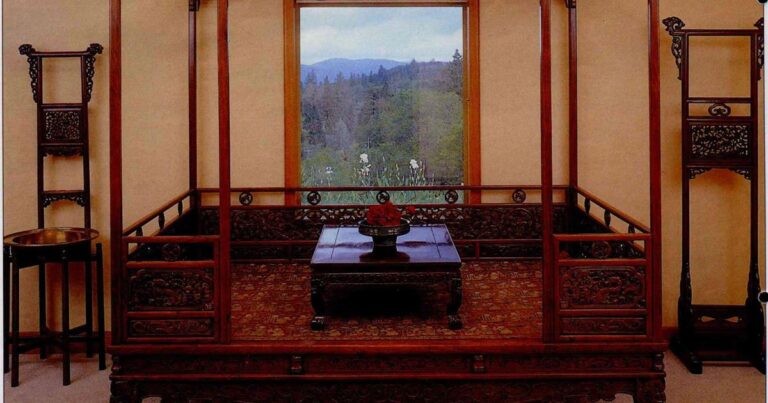CD-ROM Furniture
A video has been produced for the nine-month exhibition to introduce the furniture, and there are plans to invite a public television station to make a documentary about the furniture. There are also plans to combine the classic and the modern by inviting Curtis Everts to appear on a CD-ROM and lecture on the intricacies of joining techniques. “We want to broaden understanding of Chinese culture in the West,” says Felicia Tang.
As part of the exhibition, Evarts and Wang Shixiang have also produced a catalogue of the museum's holdings in both English and Chinese. Each item is described by the two authors, accompanied by details from woodblocks and paintings, showing how the item was originally used and how it has evolved over time. Occasionally, the authors offer differing views, which Wang Shixiang is rather happy about: “That makes things interesting. I don't agree with the author, nor do I insist that he agree with me. I leave it to the reader to be the judge.”This first Sino-Western collaboration on Chinese furniture is an interesting addition to the long history of cultural exchange between China and the rest of the world.
This year marks the 50th anniversary of the United Nations, and San Francisco is celebrating, bringing more tourists than usual. The exhibition is expected to attract more than 100 visitors a day, adding to the tourist city's attractions. Once you've arrived in San Francisco, after putting flowers in your hair, don't forget to take a look at the precious jewels from China that have survived the ages and are now safe in a faraway land.
[Picture Caption]
Page 74
The Museum of Classical Chinese Furniture, which houses a collection of Ming-dynasty furniture, is located in the hills about a three-hour drive from San Francisco. One corner of the museum features a replica of a woman's bedroom.
Page 75
The first impression of Ming furniture is often one of simplicity of form, as evidenced by the yellow rose cabinet shown here with its rounded corners and wooden hinges.
Page 76
(Left) The graceful lines of the arch between the five legs of this Yellow Rosewood incense stand are reminiscent of five large lotus petals. (Center) This Arhat bench is made entirely from precious rosewood. You can imagine its enormous value.
Page 77
(Right) Much of the appeal of Ming Dynasty furniture lies in its balance of simplicity and richness. Pictured here is a square yellow rosewood brazier stand.
Page 78
This yellow quince screen with marble panels and this yellow quince folding armchair with a horseshoe back are among the museum's most precious pieces.
Page 79
The furniture arrangement at the San Francisco exhibition feels very authentic. Surrounded by 12 screens, this Arhat sofa bed is where the host entertains his guests. Guests can sit or lie on the bed and enjoy a song and dance show while tasting food served on a small table above the bed.
Page 80
The China Classical Furniture Museum commissioned mainland Chinese art historian Wang Shixiang to write the calligraphy for the museum's nameplate, and its collection is more highly regarded than any other Chinese furniture collection in a museum in the United States.
Page 81
Miniature ceramic furniture excavated from Ming tombs often reflects the furniture designs of the time. These two sets of chairs and tables are remarkably similar, despite being very different in size. (Photo: Frédéric Choisel)


